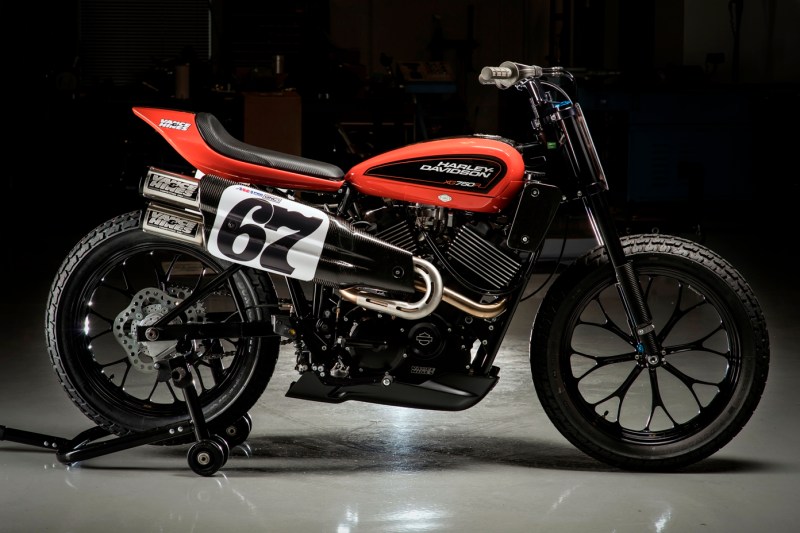If you aren’t familiar with flat-track motorcycle racing, you really should do some Googling after reading this article. Fearless riders manhandle high-powered bikes around a dirt oval, drifting every corner and providing some of the closest wheel-to-wheel action of any motor sport.
What makes pro flat-track racing even more unique is the fact that it’s been done in nearly the same format, with almost identical machines, for decades. For that reason, news of a brand new flat-track bike from Harley-Davidson is pretty significant.
The Harley-Davidson Screamin’ Eagle Factory Team has introduced the XG750R, its first all-new flat-track race bike in 44 years. The XG750R will make its official competition debut Sunday, May 29, at the AMA Pro Flat Track Springfield Mile in Illinois before getting some special attention at the ESPN X Games event on June 2.
Powered by the fuel-injected, liquid-cooled Harley-Davidson Revolution X V-Twin engine, the XG750R will be raced by Factory Team rider Davis Fisher on the AMA Pro Harley-Davidson GNC1 presented by the Vance & Hines flat-track series. The new XG750R motorcycle is strictly for race competition and will not be offered for sale — yet.
The 750cc Revolution X V-Twin engine was designed for the Harley-Davidson Street 750 bike, but has been tuned for track duty. The engine and racing frame come from Vance & Hines Motorsports (who also partner with Harley for motorcycle drag racing programs).
“After decades of flat-track racing success behind the Harley-Davidson XR750 flat track motorcycle, we knew it was time to develop the next-generation Harley-Davidson to compete in one of the best spectator racing sports out there today,” said Kris Schoonover, Harley-Davidson’s racing manager.
Fisher, in his first season racing with the Harley-Davidson Screamin’ Eagle Factory Team and a rookie on the GNC1 series, will be the first racer aboard the XG750R. The 18-year-old racer from Warren, Oregon, won the 2015 AMA Pro GNC2 championship.
“We wanted a young rider with plenty of raw ability for the XG750R program, and Davis proved himself in the GNC2 class,” said Schoonover. “We are excited to have the opportunity to bring an emerging talent like Davis up to the GNC1 series to develop the new bike alongside an experienced champion like Brad Baker.”
Harley-Davidson Screamin’ Eagle Factory Team rider Brad Baker, who is 23 years old and the 2013 AMA Pro Grand National Champion, will continue to race aboard the Harley-Davidson XR750 motorcycle while Fisher races the XG750R through its developmental stage (something tells us Baker will be a bit jealous of Fisher).
Schoonover stressed the importance of development work on the XG750R, which, like all other motor sports vehicles, will have some kinks to work out as it engages in competitive settings for the first time. Before long, though, the new flat-track bike should be among the leading machines in races across the U.S.







